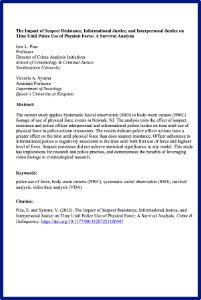By Beatriz Magaloni, Edgar Franco Vivanco, Vanessa Melo
State interventions against drug trafficking organizations (DTOs) sometimes work to improve security, but often exacerbate violence. To understand why, this paper offers a theory about different social order dynamics among five types of criminal regimes – Insurgent, Bandit, Symbiotic, Predatory, and Anarchic. These differ according to whether criminal groups confront or collude with state actors; predate or cooperate with the community; and hold a monopoly or contest territory with rival DTOs. Police interventions in these criminal orders pose different challenges and are associated with markedly different local security outcomes. Evidence for the theory is provided by the use a multi-method research design combining quasi-experimental statistical analyses, extensive qualitative research and a large N survey in the context of Rio de Janeiro’s “Pacifying Police Units” (UPPs), which sought to reclaim control of the slums from organized criminal groups.
American Political Science Review. 2020. 51p.




















